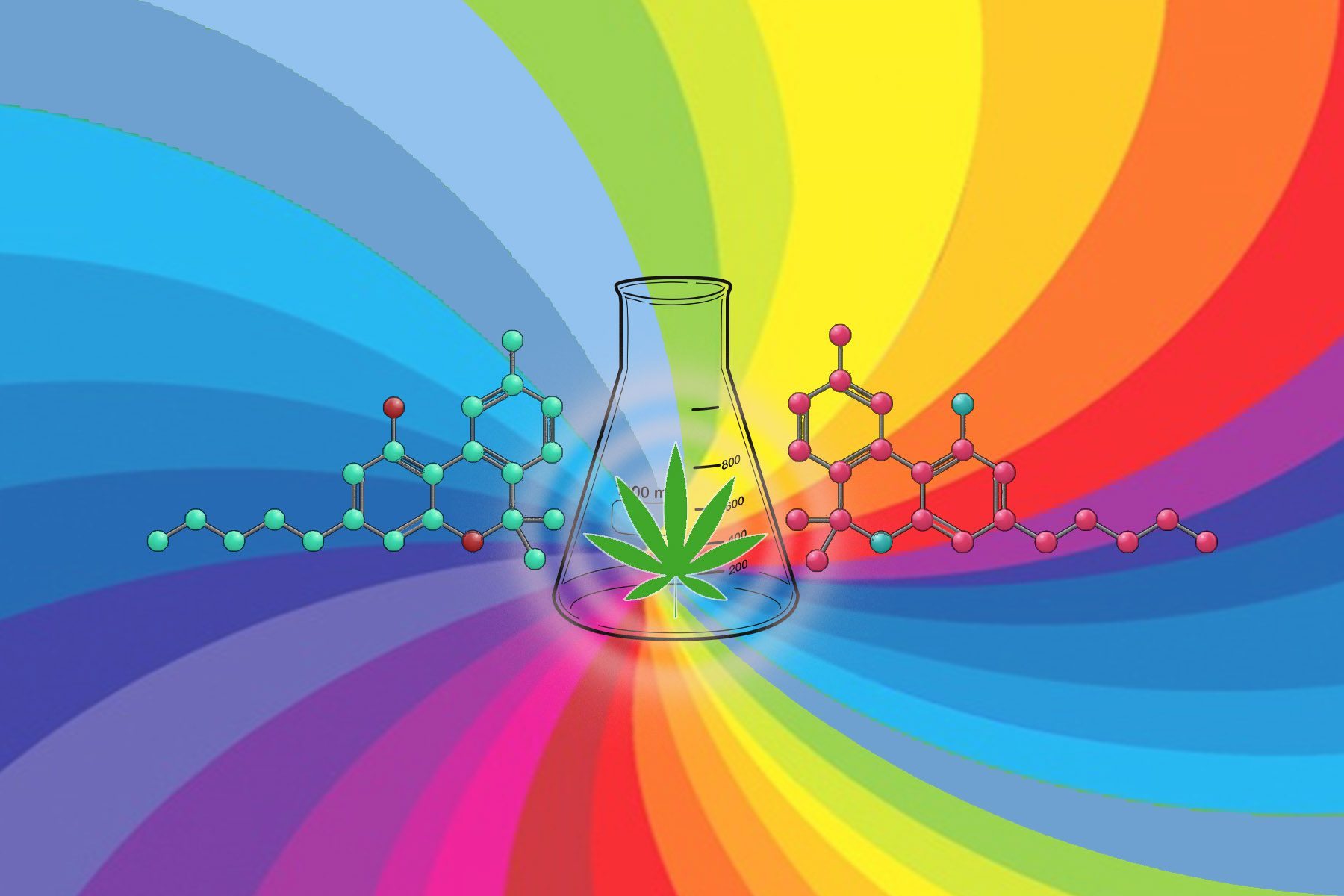Where does CBN (Cannabinol) come from?
Cannabinol or CBN is increasingly available on the market in a variety of forms, often suggested for relaxation. Where does it come from, and what’s it good for? This article will take a look into this famous cannabinoid.
What is CBN?
CBN is a cannabinoid and a cannabinoid is simply a chemical substance found in the cannabis plant (1), and there are over 100 identified cannabinoids (2). CBN is found in low concentration in the plant and is mainly a product of the aging of tetrahydrocannabinol acid (THCa). When cannabis is aged, THCa in the plant converts to cannabolic acid (CBNa), and when decarboxylated by air, heat or light, converts to CBN (3).
Like cannabidinol (CBD), CBN is available in many products such as gummies or sublingual oils, and taken by people for its pleasant effects. With CBN consumers generally include relaxation as reasons why they use it, but cannabinoids of all kinds affect people differently depending on their personal chemistry, dosage level, and other factors.
Is CBN legal?
Yes but that may depend on its source. Hemp and marijuana both come from the same plant, Cannabis, which naturally contains Delta-9 THC, the single cannabinoid that is under federal-control, and the main psychoactive substance in cannabis. The amount of Delta-9 THC existent in the plant material per dry weight determines the federal-compliance of the final product. The 2014 Farm Bill defined the legal limit at .3% so cannabis with less than that is considered legal hemp. The 2018 Farm Bill expanded on this, making it clear to legal experts that all other plant material and substances derived from legally-defined hemp are also federally-compliant (5).
Under current federal regulatory conditions, people are able to make, sell, buy, and use products made with CBN, as long as the amount of delta-9 THC is under .3% of the source materials’s dry weight and the product is from hemp.
History
Cannabinol is “famous” for being the first cannabinoid to be isolated from cannabis in the late 1800s (6), the first to have its structure determined in the early 1930s, then being the first to be synthesized in 1940 (6). Early research from the 1940s and 50s suggested that CBN had psychotropic qualities of THC, but at much lower potency (6).
Major research into cannabinoids was largely stymied in the United States because of a decades-long racially-motivated prohibition on the plant (7). However, the Farm Bills’ changes have prompted renewed interest and there has been research on CBN for its sedative, anticonvulsant, anti-inflammatory, antibiotic, and anti-MRSA properties (4).
Manufacturing
CBN can be extracted from hemp and for the end products to be federally-compliant, it must come from hemp. The methodologies detailed here are not exhaustive but intended to give an overview.
Enrich the content
Natural aging is one way to produce CBN in cannabis, regardless of type or strain. THC in hemp oxidizes to CBN when exposed to oxygen and light. This is part of the decarboxylation process, which activates compounds in cannabis (8). Applying heat is a common strategy to accelerate the process. Typically a lower temperature is used for decarboxylation but higher temperatures over 150° C may be useful for increasing CBN amounts in biomass, and may be able to remediate concentrations of THC higher than the federally-compliant level of .3% Delta-9 per dry weight (9).
Ultraviolet light may be an alternative to heat for the same effect since light also facilitates the CBN conversion (9). These methods are to increase CBN in the plant material so its biomass is primed for extraction of the CBN.
Go Live
The extraction process is similar to that used for most popular cannabinoids but can vary a bit per material type. One version of CBN extraction begins by soaking the biomass in a solvent of choice (typically either CO2 or ethanol) to separate out the terpenes and cannabinoids from the biomass. The resulting solution is put into an evaporator that uses heat and a vacuum to remove the solvent. This results in a refined CBN crude extract concentrate which is then further distilled to create a purified distillate (3).
In CO2 extraction, carbon dioxide is pressurized in metal tanks until it becomes a supercritical fluid, then the fluid pulls out the desirable compounds from the hemp flower. The fluid is then separated, leaving only concentrates. Ethanol extraction is done by soaking raw hemp in ethanol to pull trichomes into the solvent. The solid material is then removed; the liquid is filtered and the alcohol purged from the extracted material (10).
There is an additional “one-pot” process, patented in 2020, that converts hemp CBD to CBN using a solvent plus iodine (14). This method mixes toluene with biomass to maximize and extract cannabinoids, then uses iodine to convert the resulting solution to CBN in a catalytic conversion (15).
Producers say that there is no single best method for extraction, rather that depends on the particular goals. Some think ethanol is the most efficient method, but that CO2 better preserves the cannabinoids and terpenes, as well as the flavonoids and carotenoids in the final product, retaining more of the whole plant’s essence (11). The iodine method is touted as being overall simpler and more efficient than the others (14).
Uses and outlook
CBN is widely considered to be sedating. This idea may originate from a common assumption that older cannabis has a more sedating effect due to the natural concentration of CBN that accumulates in it over time. Anecdotal experience with older marijuana causing sleepiness may also be a factor in this idea. However there may be other reasons for this reaction.
It may be that the combination of CBN and THC actually causes the drowsiness factor, due to the entourage effect’s synergistic treatment of both cannabinoids. Entourage effect refers to how the interaction of various cannabinoids present in a particular cannabis product may alter the effect on the consumer (12). Even the small amount of THC in hemp (less than 0.3% per dry weight) may add to the entourage effect without producing the intoxication associated with higher THC cannabis.
Another possibility is that rather than the CBN in older cannabis causing the sedative effects, it could be the older terpenes. In older cannabis, “the monoterpenoids have evaporated leaving the more sedating oxygenated sesquiterpenoids,” according to Dr. Ethan Russo, neurologist and cannabis researcher (13). So the CBN to sedation relationship may be better described as correlative but not causative.
Is CBN right for you?
Whether or not you are familiar with using CBD you may find a benefit to using CBN. For a new consumer it can be a gentle onboarding to the effects of hemp derived cannabinoids. For a more experienced consumer, CBN may be better able to target a desired state.
No matter your experience level, trying CBN for yourself is the way to know first hand if it’s right for you. Remember to always purchase from a reputable brand that independently tests their products for safety, purity, and potency.
References
- Cannabinoids
- Cannabis, Marijuana, and Cannabinoids: What You Need To Know
- How To Extract CBN Oil
- Cannabis Pharmacology: The Usual Suspect and a Few Promising Leads
- HIA Position on Delta-8 THC
- Cannabinoid Pharmacology: The First 66 Years
- Marijuana’s Racist History Shows The Need For Comprehensive Drug Reform
- What Is Decarboxylation
- Converting THC To CBN
- Choosing The Right Cannabis Extraction Method
- MJ Biz Magazine October Edition
- Taming THC: Potential Cannabis Synergy and Phytocannabinoid-terpenoid Entourage Effects
- What Is CBN And What Are The Benefits Of This Cannabinoid
- Iodine Promoted Aromitization of p-Methane Type Phytocannabinoids
- Method For Synthesis of Cannabinoid Products
Is it legal to send CBD related products through the mail?
Yes, but even though these products are federally-compliant, individual states may have their own regulations about purchasing or using hemp-based products, and these are subject to change. You should check your state and local rules before ordering.
What does “hemp-derived” mean?
Hemp-derived means made from hemp, sometimes also referred to as industrial hemp. The 2014 and 2018 Farm Bills established new federal legal definitions and rules for hemp, including that hemp and “and any part of that plant, including the seeds thereof and all derivatives, extracts, cannabinoids, isomers, acids, salts, and salts of isomers, whether growing or not, with a delta-9 tetrahydrocannabinol concentration of not more than 0.3 percent on a dry weight basis” may be used for production, sales, transport, and use.
What is a COA?
A certificate of analysis (COA) is a document attesting to a product’s laboratory analysis for cannabinoids and in some cases adulterants, heavy metals and pesticides. It is a useful tool for cannabis producers and customers to ensure quality and trust.




